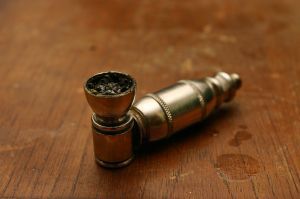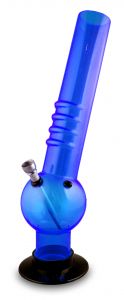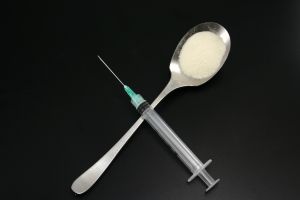What is drug paraphernalia? In New Jersey, being charged with Possession of Drug Paraphernalia under 2C:36-2, mean you have in your possession with intent to use, a wide variety of items, as described generally and in detail by 2C:36-1, to plant, propagate, cultivate, grow, harvest, manufacture, compound, convert, produce, process, prepare, test, analyze, pack, repack, store, contain, conceal, ingest, inhale, or otherwise introduce into the human body a controlled dangerous substance, controlled substance analog, or toxic chemical. That covers quite a bit of ground, and would seemingly include a lot of items that have a perfectly lawful purpose… like plastic baggies. So, how does a prosecution determine that items are drug paraphernalia, and not a lawful item?

Lets be blunt, (no pun intended) what are we talking about here? We’re talking about bongs, pipes, grinders, ziplock baggies, water pipes, vials, scales, hypodermic needles, straws, spoons, bowls, blenders, dilutants, adulterants, sifters, capsules, balloons, envelopes, containers, screens, etc., etc., etc… So, an interesting question to ponder is; how are “head shops”, like Wonderland on route 18 in East Brunswick, allowed to sell the types of items that are not only described and prohibited by statute, but could certainly function in the capacity of those functions prohibited by statute? In other words, it sure looks like they sell drug paraphernalia, how are they allowed to sell drug paraphernalia?

The answer is not so complicated. While all of the items mentioned may be used for illegal purposes, they may also be used for lawful purposes. Hence; the intent with which these items are bought, sold, and used is the determining factor. At shops like Wonderland, talk about drugs is strictly prohibited by the proprietors of the store. If a patron were to say something like, “Hey dude! That bong rocks! I’m totally going to smoke mad weed out of that and get mad wasted dude!” They would likely be informed by the proprietor that the purpose of the water pipe (because bong is slang for a marijuana smoking pipe, and could imply intent) isn’t designed to smoke weed, and they would likely ask the stoner patron to leave the store. The proprietor would not want to sell any items to that patron who has just announced that he intended to use it as paraphernalia, and the verbal correction by the proprietor would demonstrate that in the proprietor’s eyes, the water pipe in question was not in fact paraphernalia used for smoking drugs. While it may seem ridiculous to look at a bong or a pot pipe and say that these items aren’t used for smoking pot, or that a small glass vial with a small spoon attached to the lid with a small chain isn’t used for storing and snorting a drug that comes in powdered form, the reality is that without direct proof of that, law enforcement and prosecutors would just be speculating as to the use. Not enough for a conviction. Not even enough for probable cause. Maybe you think thats absurd… Try this one instead. Small one inch square ziplock bags are frequently used to sell small quantities of marijuana, or rock cocaine. I also bought a shirt last week that had a 1 inch ziplock bag attached to the sleeve containing extra buttons. Who’s to say why I may have a 1 inch square ziplock bag in my possession? Intent must be proven, and mere speculation will not do! However a prosecutor or police officer may choose to tell their story, if it is based on speculation, I can tell a better one. Show me the proof!

So, how does a prosecutor ever prove that an item is in fact paraphernalia? The answer is; very easily. The vast majority of times a paraphernalia charge is brought, law enforcement has discovered the item in question is either filled with drugs, presently being used for drug, was used for drugs in the past and contains a residue, or is in close proximity to drugs. A pot pipe that has been used to smoke marijuana will have a residue inside of it that can be chemically tested by the state police lab for the presence of THC. A ziplock bag might have a residue of a white powder inside, or may still have a quantity of a white powder in it. If that residue or white powder tests positive for the presence of a controlled substances, that zip will be considered paraphernalia. If a drug dealer is arrested, and a search of his car or house produces a shoe box filled with a large quantity of drugs, a scale, and a large quantity of empty ziplock bags, the scale and zips will be considered paraphernalia. So will any cutting agents used by the drug dealer to dilute the product.
Fortunately, Possession of Drug Paraphernalia is not a very serious offense, and is graded as a disorderly persons offense, with a statutory maximum penalty of $1,000 and 6 months in jail. That means prosecutors and law enforcement aren’t wasting time duking it out with defense attorneys over possible paraphernalia items, or those items which theoretically might be paraphernalia. When the charge has been brought, it is almost always brought with an accompanying drug charge of some kind, and there is little guessing as to what the items seized are actually being used for.
